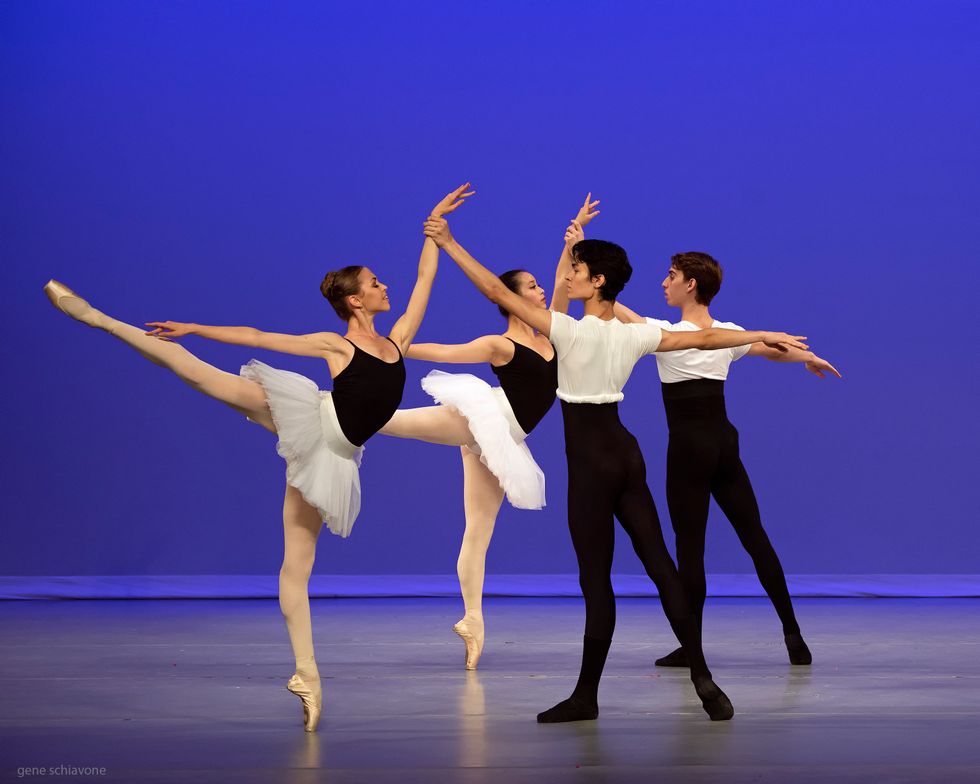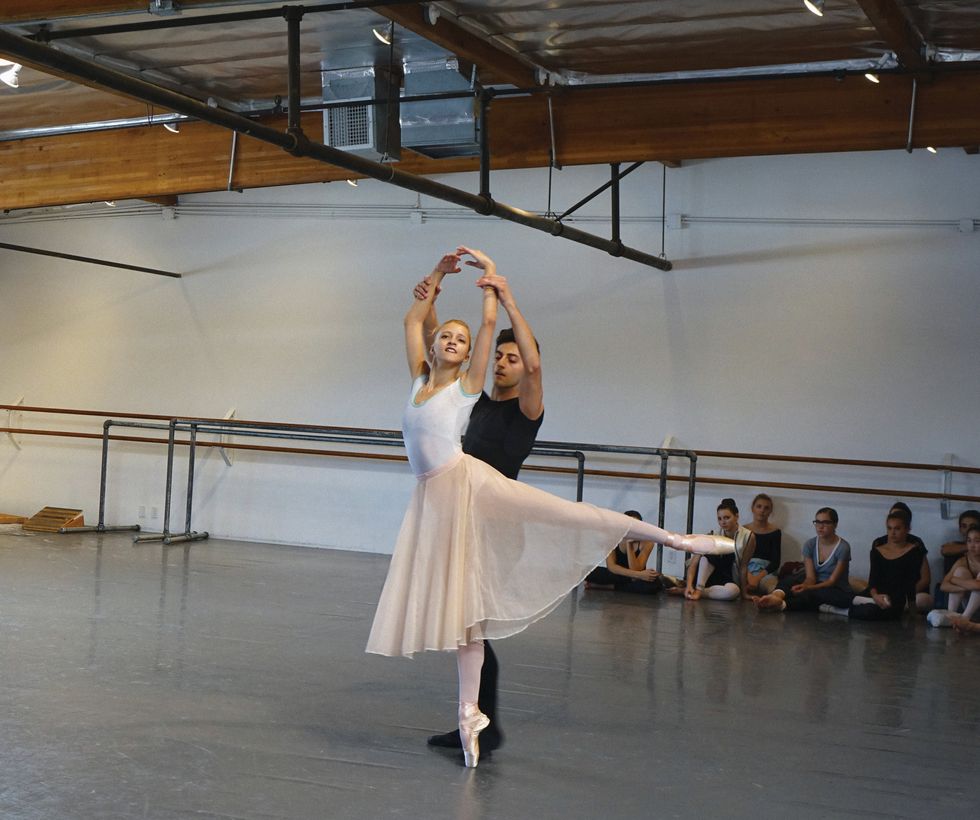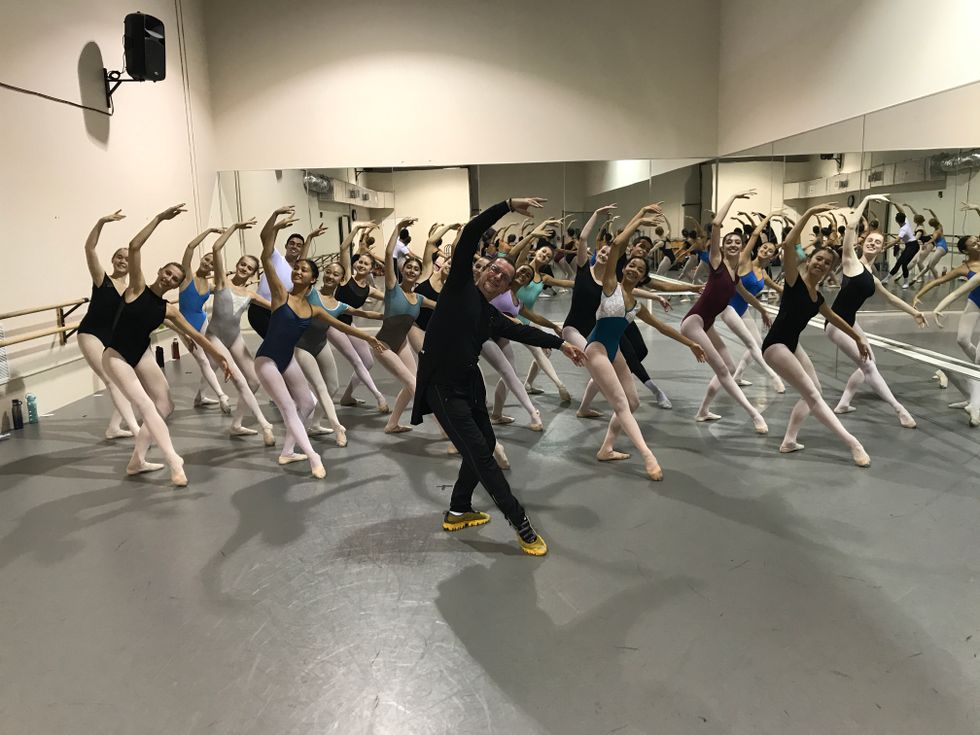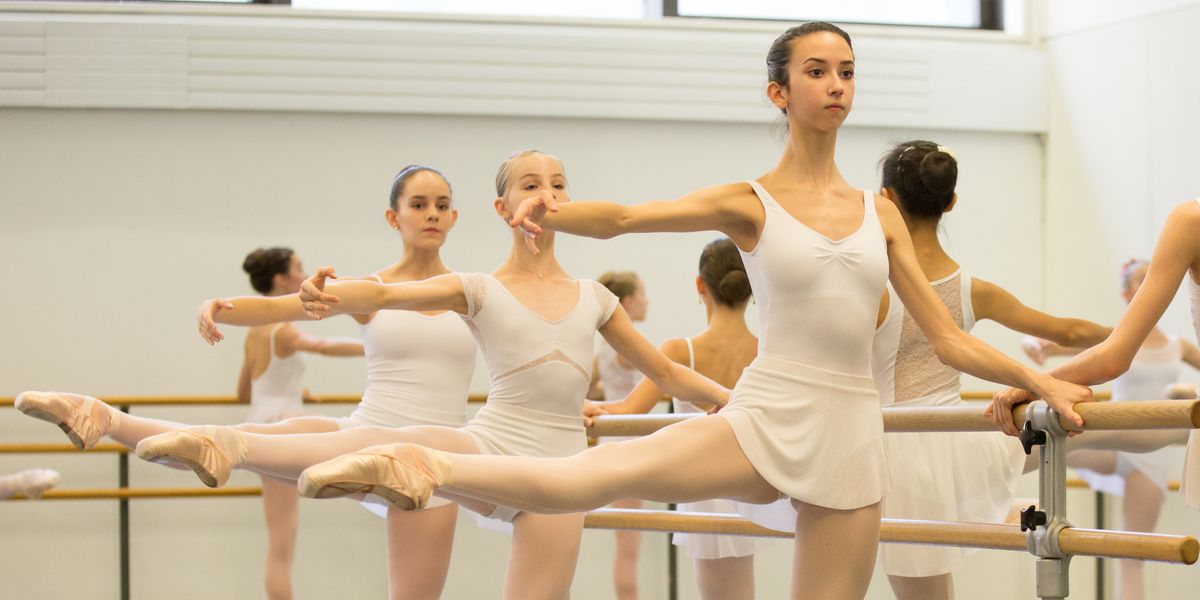Should You Try a New Ballet Technique at Your Summer Intensive?
Before spending a summer at Los Angeles Ballet School, Lillian Glasscock had never learned a Balanchine variation. “The stylistic differences, like preparing for a pirouette with a straight back leg, were at first very challenging,” says Glasscock, 17. “But it soon got easier.”
Los Angeles Ballet company members were in class daily, motivating and inspiring her. Trying out a new style and expanding her repertoire gave Glasscock more strength, and a better understanding of the varied demands of ballet companies today. Months later, the Balanchine variations she learned are now personal favorites.
While the early years of training are typically spent diligently working through the syllabus of a single ballet technique, when you start to prepare for a professional career, versatility is key. There isn’t just one correct version of each step. And as ballet companies continue to diversify their repertoires, directors need dancers who can move fluidly between an array of styles.
“Choreographers will challenge you to step out of your comfort zone,” says Colleen Neary, co-director of Los Angeles Ballet School. “Don’t be afraid of taking the steps you already know further, or learning something entirely new.”
Trying another technique also can help you address your weak areas. Are you naturally a quick mover? You may want to try a Vaganova-based program that builds adagio control. Do you tend to prepare for each step? You may want to push yourself to bolder, faster movement with a Balanchine-based intensive. While a summer program may not be long enough to master a new style, it is the perfect way to start exploring.
Vaganova: Strong & Controlled
 Students at the Bolshoi Ballet Academy in New York. Photo by Gene Schiavone, courtesy Bolshoi Academy
Students at the Bolshoi Ballet Academy in New York. Photo by Gene Schiavone, courtesy Bolshoi Academy
As a testament to the value of learning multiple techniques, New York City Ballet soloist Indiana Woodward recently told The New York Times that training with the Bolshoi Ballet Academy was one of her life-changing moments. Perhaps this is because of the leg strength and upper-body coordination that the Russian style demands.
“Vaganova technique is the foundation of practically all recognized ballet training,” says Marina Leonova, dean of the Bolshoi Ballet Academy in Moscow and artistic director of the summer programs in New York and Connecticut.
Spending four to six weeks in this tradition will have you paying particular attention to épaulement—the placement of the head in relation to body direction and in coordination with the arms and legs. Students may be challenged by getting explicit directions about where to direct their gaze.
Longer adagios and slower jumping tempos can also be grueling for newbies. But working on these elements will give you the power in your legs and the finesse in your upper body needed to conquer classical variations and corps de ballet work.
Balanchine: Fast & Bold
 Students at Los Angeles Ballet School. Photo by Catherine Kanner, Courtesy LABS
Students at Los Angeles Ballet School. Photo by Catherine Kanner, Courtesy LABS
With an emphasis on musicality, Balanchine classes demand an alert ear. Students learn to play with syncopation, and turn or jump through a phrase of music.
“Music was everything to Balanchine and without it, we wouldn’t be dancing,” says Kay Mazzo, chairman of faculty at the School of American Ballet. “One of the first things I tell students is ‘We are dancing to a live pianist and you have to start and finish with them.’ ”
Students may find themselves taking technique class in pointe shoes, moving faster and articulating larger positions, like a pirouette from an elongated fourth position with a straight back leg. Tendus, dégagés and petit allégro may come at seemingly impossible tempos.
“In the Balanchine style there are bigger movements, more traveling, a freer approach in how you hold your port de bras and hands, really a boldness,” says Neary.
If you have been primarily studying a technique that emphasizes detail and placement, the most difficult request may be to channel your boldest self. However, it can be a breakthrough to discover that if you fall, you likely will be applauded.
The British Style: Soft & Expressive
 Iain Webb teaching class at Sarasota Ballet School. Photo courtesy Sarasota Ballet.
Iain Webb teaching class at Sarasota Ballet School. Photo courtesy Sarasota Ballet.
Students who try the English style find an emphasis on dramatic expression and supple footwork. At The Margaret Barbieri Conservatory at Sarasota Ballet School, director Margaret Barbieri says the key elements of the English style include “clean length of line; the use of port de bras, épaulement and upper body; neat, intricate footwork and a keen grounding in musicality and acting.”
Barbieri notes that you need “quick feet” for Sir Frederick Ashton’s ballets. While that may sound similar to Balanchine, there is a softer sensibility to English footwork. Students new to this style will find that in petit allégro, instructors expect the heels down in demi-plié, which can be difficult if the calves or Achilles tendons are tight. Pointe shoes are softened up to allow for quiet landings.
In addition to works by Ashton, students might practice variations by Sir Kenneth MacMillan or Sir Antony Tudor that also have strong narratives, learning how to portray a character in order to develop artistry and projection.
Good-bye Fear. Hello, Opportunity
Whatever technique you try, to improve, you need to stay open-minded and allow yourself to be vulnerable. If you are worried about not being as advanced as other students who train in a style year-round or if you fear you won’t get enough attention, you won’t allow yourself to take the risks needed to learn something new. Remember, a summer program is an educational opportunity, not a competition.




